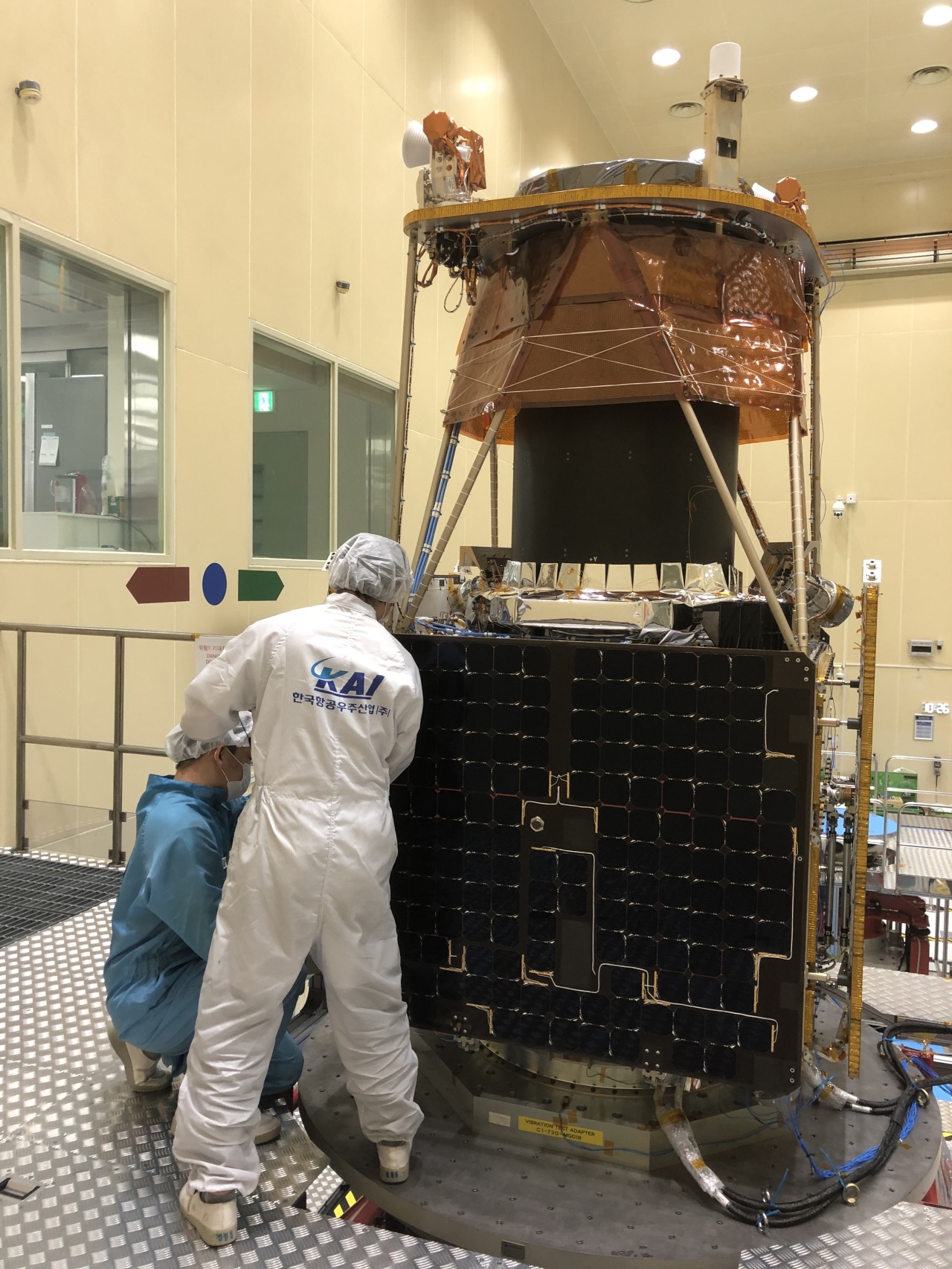KAI to launch 4 more midsize satellites by 2025
By Kim Byung-wookPublished : March 23, 2021 - 16:29

After the successful launch of South Korea’s next-generation midsize satellite Monday, Korea Aerospace Industries will be in charge of sending a second one into orbit next year, the company said Tuesday.
The launch of the midsize satellite No. 1 was led by the Korea Aerospace Research Institute and KAI participated as a co-developer. KAI will lead the launch of satellite No. 2 scheduled for January next year, with the help of technology transfers from the KARI. KAI will be responsible for the development of the satellite’s system design, body development, manufacture, assembly, test and actual launch.
“The launch of satellite No. 2 will be the first launch in Korea led by the private sector,” a KAI official said.
According to KAI, the purpose of launching satellite No.1 and No.2 is to establish a 500-kilogram standardized satellite platform. Depending on the types of equipment mounted on this platform -- such as radars or image sensors -- the purpose of the satellite changes.
KAI will launch satellite No. 3 and No. 4 in 2023, and No. 5 in 2025. No. 3 will be used for space research, while the No. 4 will monitor Korea’s crop and agriculture status. The No. 5 will be utilized to monitor forests and water supplies to track abnormal weather conditions.
Already equipped with a manufacturing facility that can make six midsize satellites at the same time, the launch of satellite No. 1 to No. 5 will lay the foundation for KAI begin the mass production of satellites.
Hanwha Systems is another player that contributed to the successful launch of the satellite No. 1.
“The global space race is all about making satellites smaller and lighter. Arirang 3A, an observation satellite developed in 2015, weighed 1,100 kilograms. The midsize satellite No.1 reduced its weight to 500 kilograms while maintaining the same function. The successful launch of the satellite No.1 paves the road for the commercialization of satellite business in Korea,” a Hanwha Systems official said.
To help the satellite No. 1 get down to 500 kilograms, Hanwha Systems reduced the size and weight of optical payloads such as cameras mounted on the satellite to 150 kilograms.
By Kim Byung-wook (kbw@heraldcorp.com)
The launch of the midsize satellite No. 1 was led by the Korea Aerospace Research Institute and KAI participated as a co-developer. KAI will lead the launch of satellite No. 2 scheduled for January next year, with the help of technology transfers from the KARI. KAI will be responsible for the development of the satellite’s system design, body development, manufacture, assembly, test and actual launch.
“The launch of satellite No. 2 will be the first launch in Korea led by the private sector,” a KAI official said.
According to KAI, the purpose of launching satellite No.1 and No.2 is to establish a 500-kilogram standardized satellite platform. Depending on the types of equipment mounted on this platform -- such as radars or image sensors -- the purpose of the satellite changes.
KAI will launch satellite No. 3 and No. 4 in 2023, and No. 5 in 2025. No. 3 will be used for space research, while the No. 4 will monitor Korea’s crop and agriculture status. The No. 5 will be utilized to monitor forests and water supplies to track abnormal weather conditions.
Already equipped with a manufacturing facility that can make six midsize satellites at the same time, the launch of satellite No. 1 to No. 5 will lay the foundation for KAI begin the mass production of satellites.
Hanwha Systems is another player that contributed to the successful launch of the satellite No. 1.
“The global space race is all about making satellites smaller and lighter. Arirang 3A, an observation satellite developed in 2015, weighed 1,100 kilograms. The midsize satellite No.1 reduced its weight to 500 kilograms while maintaining the same function. The successful launch of the satellite No.1 paves the road for the commercialization of satellite business in Korea,” a Hanwha Systems official said.
To help the satellite No. 1 get down to 500 kilograms, Hanwha Systems reduced the size and weight of optical payloads such as cameras mounted on the satellite to 150 kilograms.
By Kim Byung-wook (kbw@heraldcorp.com)



![[Herald Interview] 'Amid aging population, Korea to invite more young professionals from overseas'](http://res.heraldm.com/phpwas/restmb_idxmake.php?idx=644&simg=/content/image/2024/04/24/20240424050844_0.jpg&u=20240424200058)






![[Hello India] Hyundai Motor vows to boost 'clean mobility' in India](http://res.heraldm.com/phpwas/restmb_idxmake.php?idx=644&simg=/content/image/2024/04/25/20240425050672_0.jpg&u=)







